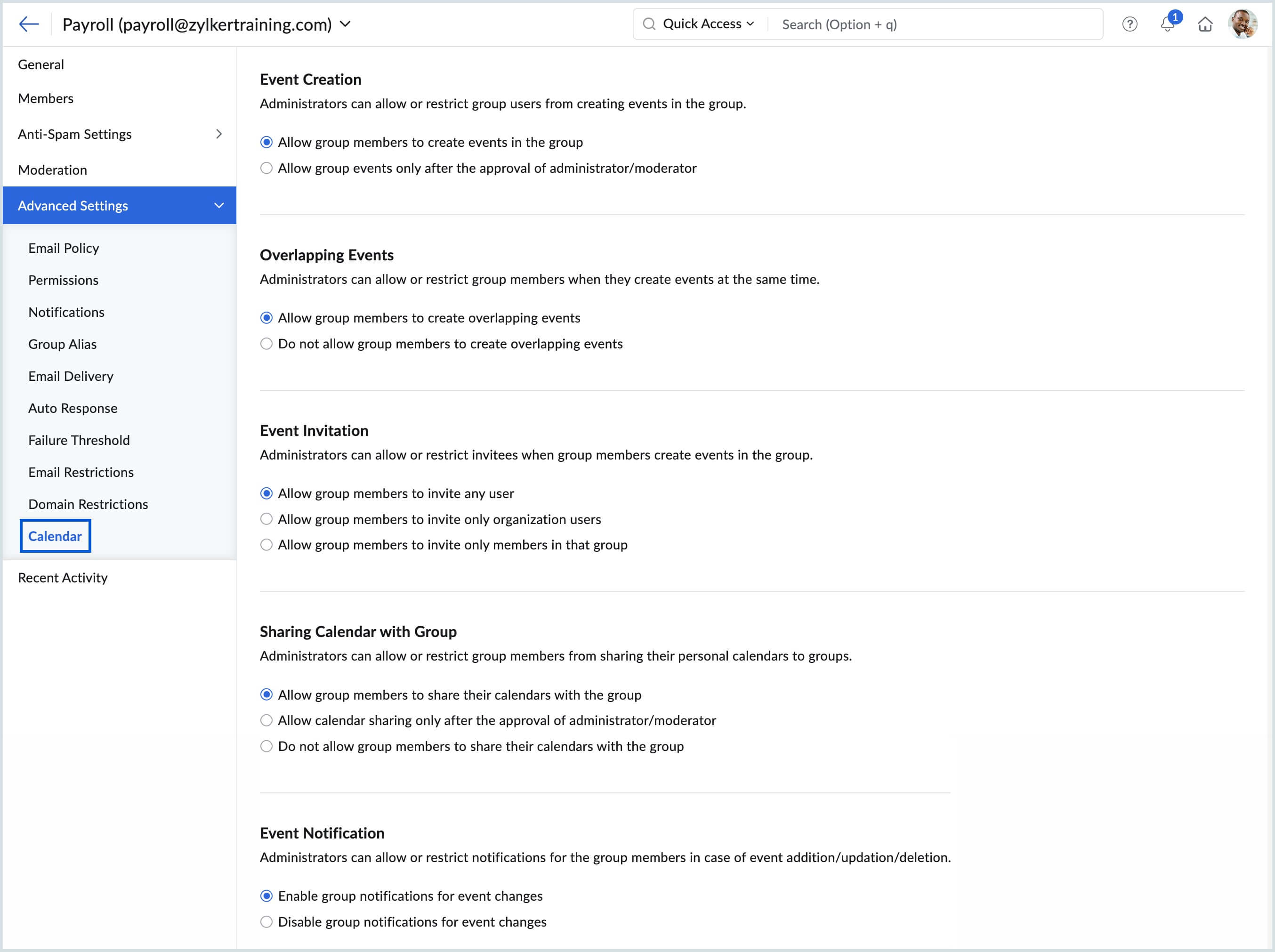Advanced Group Settings
Steps to Access Advanced Group Settings
With Zoho Mail, you can configure personalized settings as per your organization's requirements. Follow these steps to access the Advanced settings of an email group by following the below steps:
- Log in to Zoho Mail Admin Console.
- Navigate to the Admin Console.
- Choose Groups from the left menu.
- All the groups you are a part of will be listed here. Click on any group from the list.
- Click on the Advanced Settings section from the left pane.
You can manage the email policy, notifications, permissions, and much more from Advanced Settings.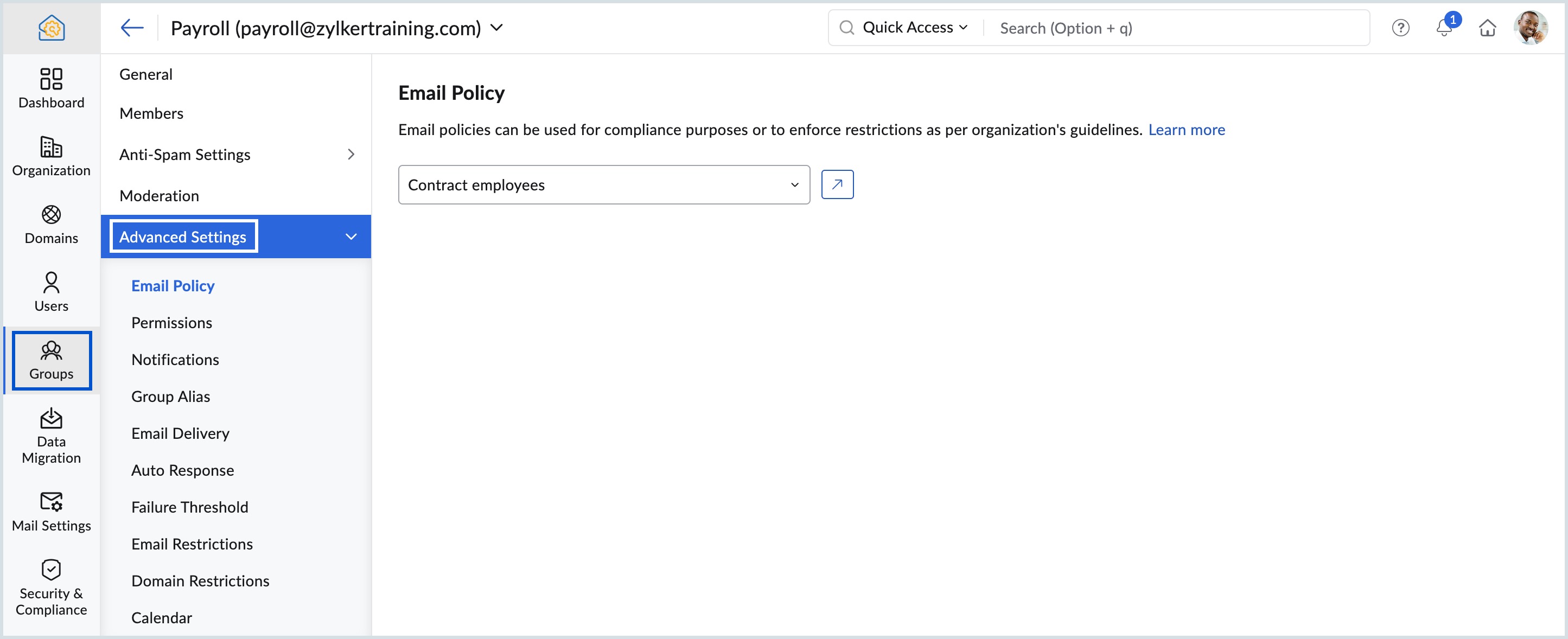
Email Policy
Email policies are used to enforce certain restrictions that comply with company guidelines. You can apply an existing email policy to your group by choosing the relevant policy from the dropdown. Click the button with the arrow icon next to the email policy drop-down menu to view the details of the selected policy.
Permissions
You can modify the following settings from the Permissions section:
- You can choose who can send emails to the group - everyone or organisation members or group members or only moderators.
- And what action has to be taken if others send emails to this group - Hold the email for moderator approval or bounce the email.
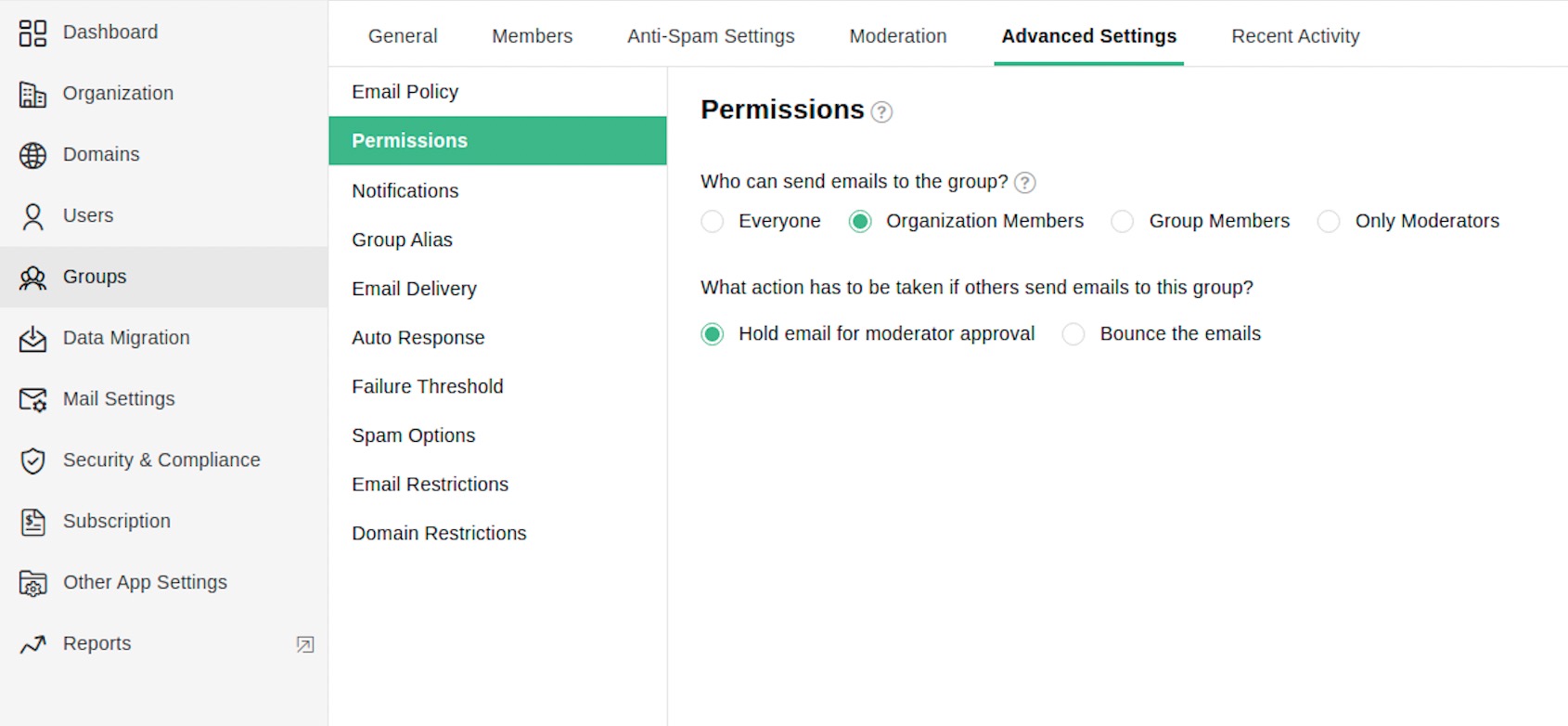
Notifications
From the Notifications settings, you can enable notifications to notify the moderator(s) when the following events occur:
- When an email is held for moderation
- After an email has been approved or rejected
In addition you can also choose to:
- Notify the sender when their email is rejected
- Suppress mail notification on member addition or deletion

Group Alias
Group email aliases are an additional email address for your group email address. You can send/ receive emails or set forwards on behalf of the group using the Group alias.
- Navigate to Group Alias settings in Advanced settings to add an alias.
- Click the Add button and enter the desired email address in the Add Alias Address pop-up to create the group alias.
- Then, select a domain from the dropdown and click Add.
- Click on the star icon near your desired alias address from the list to set it as the default email address.
Follow the steps below to delete an alias address:
- Hover over the alias address in the list that you intend to delete.
- A delete icon will appear on the right side.
- Click the delete icon.
- In the Confirm Action! pop-up, click the Delete button.

Note:
If your account reaches the maximum number of group email aliases, contact support@zohomail.com.
Email Delivery
You can enable or disable the following settings from the Email Delivery section:
- Deliver emails only if the group address is in TO or CC
- Allow members to send emails using the group email address as the From address

Auto Response
The Auto-Response setting can be used to configure automatic reply templates based on the sender's type in the groups. The types of senders are listed under the Send to section. You can set up Auto-Response based on the following type of senders:
- Organization members part of the group - Members who belong to both the organization and the group receiving the email.
- Organization members outside of the group - Members who are part of the organization but not included in the group.
- External members part of the group - Members who are not part of the organization but are included in the group.
- External members outside of the group - Individuals who are neither part of the organization nor the group.
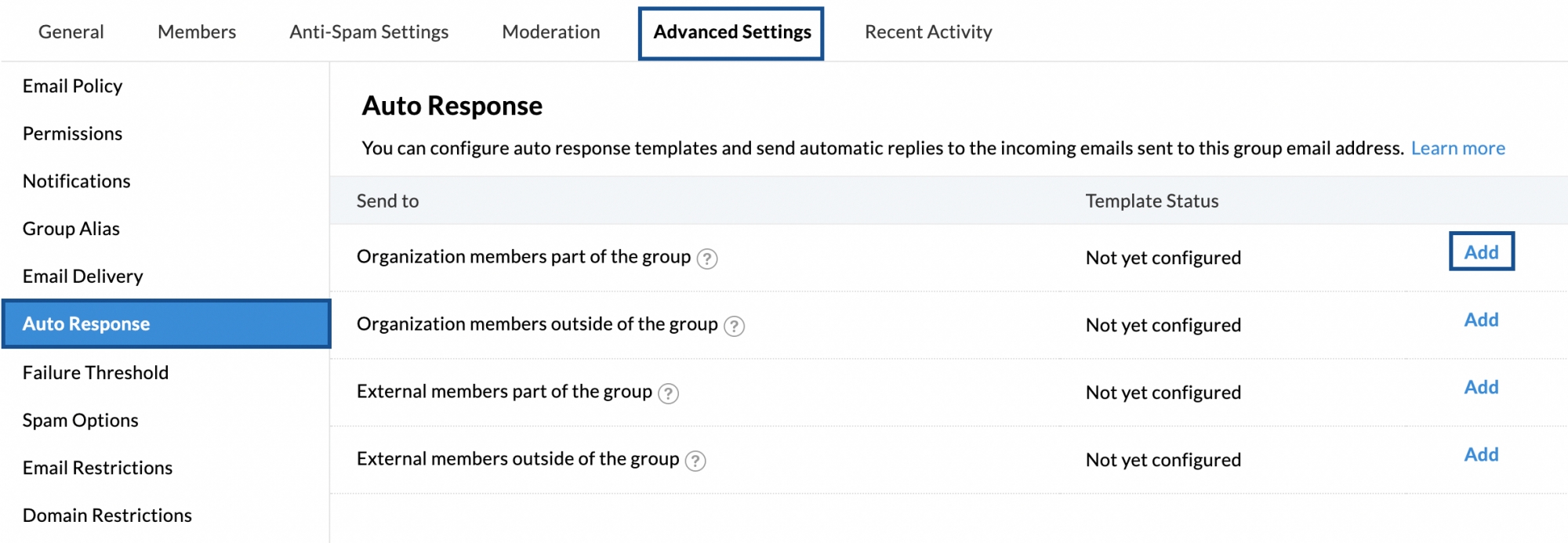
The Template Status section displays whether the auto-response template has been configured.
- To configure, click Add Template next to the respective sender type.
- In the compose window, enter the response template for the selected sender type.
- Utilize the formatting tools available at the top of the compose window to compose the auto-response template.
- Once done, click Add to save the template.
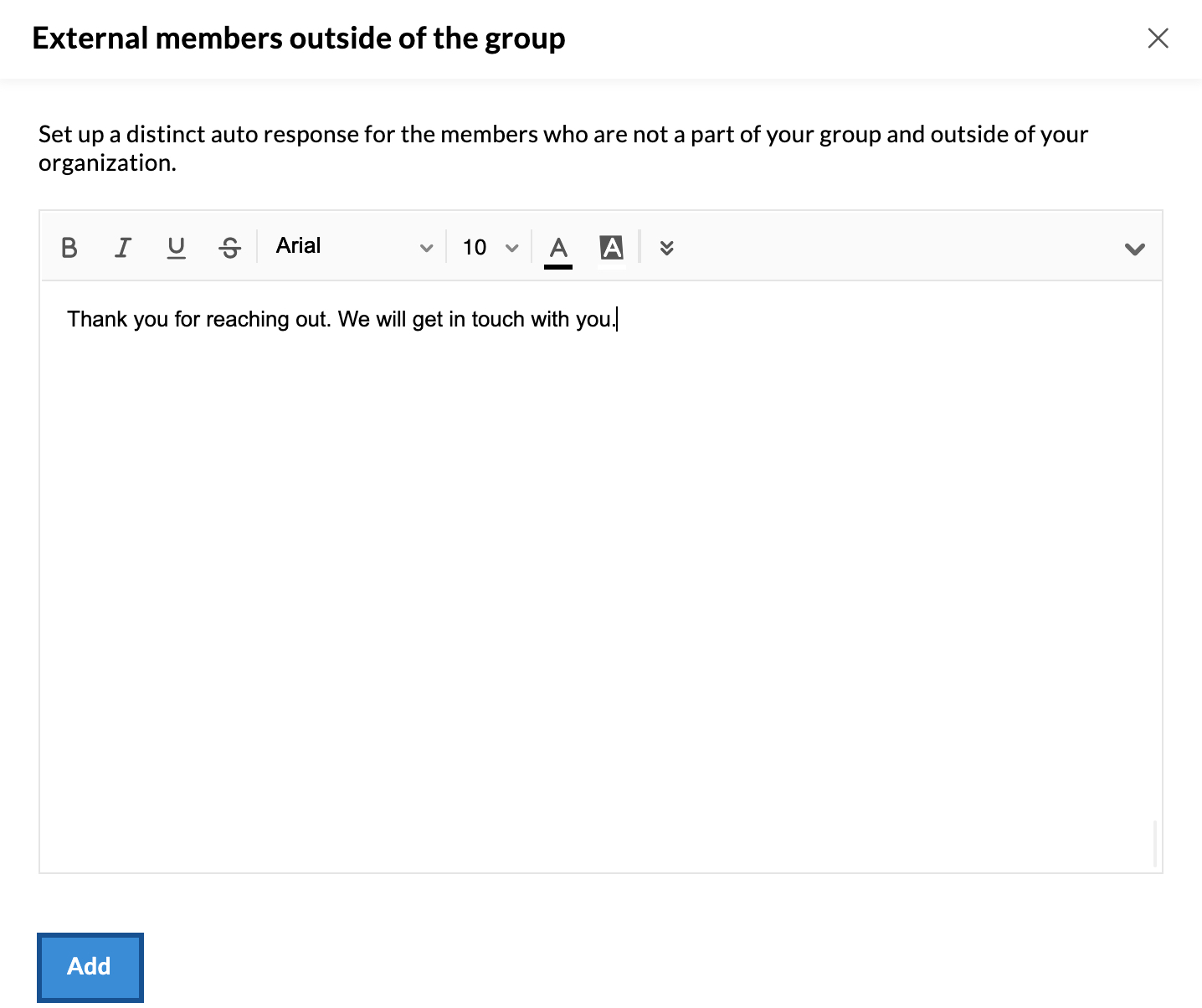
- Click the Edit or Delete icon next to each response type to modify or remove the configured response template.
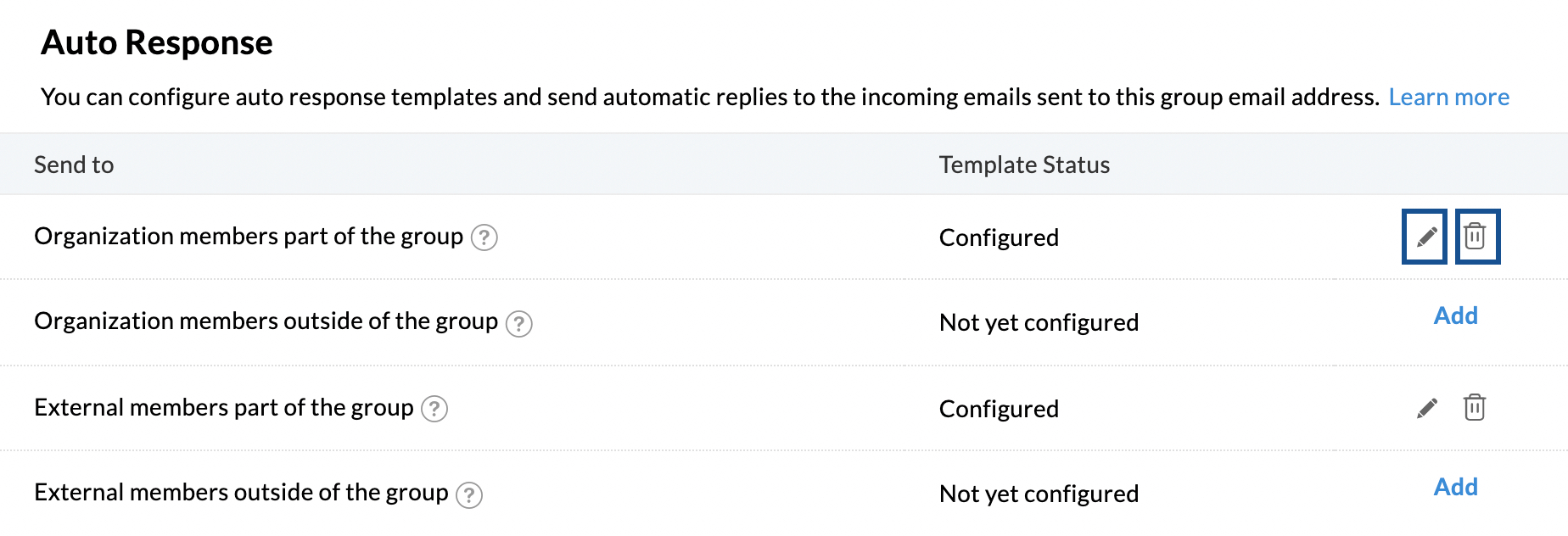
Failure Threshold
You can define a failure threshold for failed email deliveries sent to group members. If an email from the group to a member repeatedly bounces and exceeds the set threshold, future emails to that member will be automatically skipped. If an email is successfully delivered after a few failed attempts, and the total number of failures remains below the threshold, the failure count will reset to zero. The failure threshold can be set within a range of 10 - 100.
For example, consider a group named Zylker Marketing with rebecca@zylker.com as one of its members. If the failure threshold is set to 10 and emails to Rebecca continue to bounce beyond this limit, all future emails from the group to her will be automatically skipped.

- To reset the failure count for any member, go to the Members section in the left pane.
- Select the desired users and click the Reset count option in the top menu to reset their failure threshold.
- The updated failure count will be reflected in the last column of the Members section.
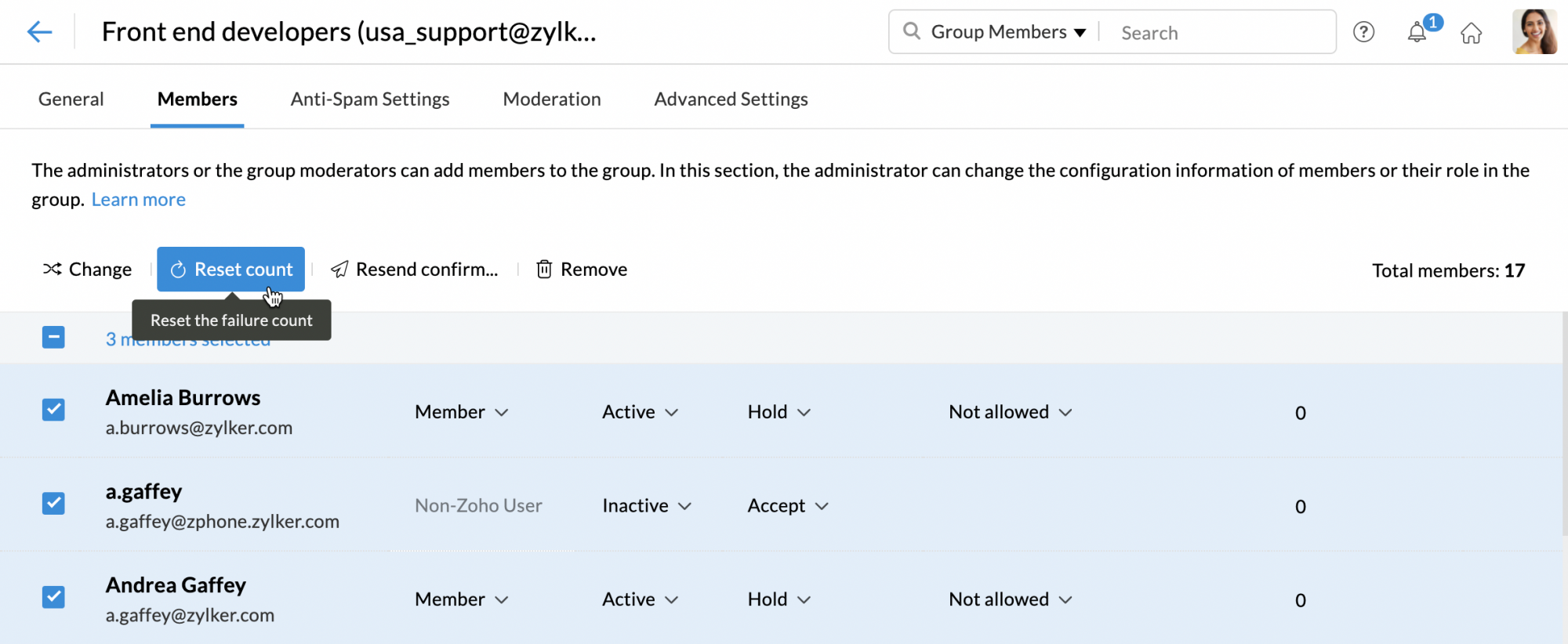
Email Restrictions
You can add the email address(es) for which email restrictions need to be applied. Click the Add button to enter the desired email addresses, and choose one of the following actions for emails sent from those address(es):
- Allow emails
- Hold emails for approval
- Reject emails
Once done, click Add.
Domain Restrictions
You can add domains of your choice for which domain restrictions need to be applied. Click the Add button to enter the desired domains, and choose one of the following actions for emails sent from those domains:
- Allow emails
- Hold emails for approval
- Reject emails
Once done, click Add.
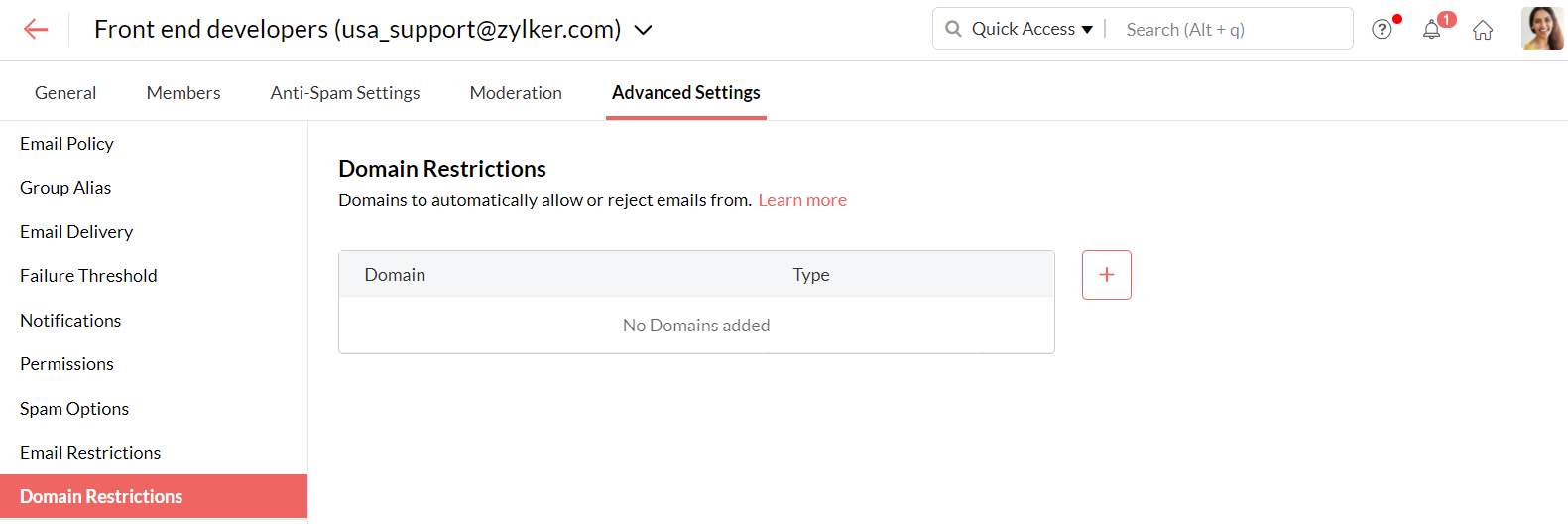
Calendar
You can manage and configure your organization's group settings in this section. Check here for more details on group admin settings and their configurations.